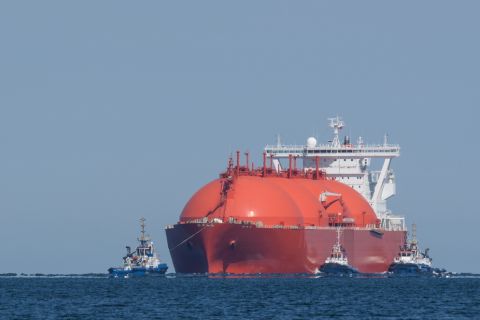
Operators are turning to analytics to help predict when machines such as ESPs might fail before they do. (Source: Syda Productions, Shutterstock.com)
Electric submersible pumps (ESPs) are one of the go-to mechanisms for artificial lift, with as many as 150,000 ESPs in operation around the world, according to Schlumberger. Although ESPs are remarkably efficient for pumping large volumes, they are highly susceptible to prolonged failures.
Post-mortems on ESPs reveal that produced gas and solids have proven to be their undoing. But with the advent of Big Data and machine learning, predicting when an ESP may fail well in advance of any potential mechanical problems is improving.
At the Unconventional Resources Technology Conference held in July in Austin, Texas, Devon Energy reported on its recent efforts to do just that.
For its study, Devon selected a geographic area utilizing several ESPs and a common target formation. Devon’s Advanced Analytics team collected a sample dataset of 51 ESP failures that occurred from January 2015 to July 2016 across 37 wells, while the company’s subject matter experts identified all of the potential factors that affect ESP functions.
Although Devon acknowledged in its study the challenges of analyzing only 51 ESP failures, its results revealed that its predictive modeling technique anticipated ESP lifespans to within about five days of the true ESP lifespans, and 90% of the model’s predictive error was within +/- 30 days of the true ESP lifespan.
“The first iteration of our model identified the specific variables that affect ESP lifespan and should be continuously observed,” said Jessamyn Sneed, evaluation and planning professional at Devon Energy. “We’ve since found ways to improve our model and overcome issues with model fit while addressing concerns discovered during the data-mining phase. We’ll continue to refine our model so that we can leverage operational knowledge with insight from analytics and human intelligence to provide the most value to the field.”
Devon’s study is an example of how leveraging Big Data can help predict problems before they happen.
Jeff Dwiggins, managing director at Artificial Lift Solutions, said it’s imperative for companies to be proactive with their analytics efforts rather than reactionary, such as what Devon has done with its study.
“You’ve got to be proactive; you cannot be in a responsive mode,” he said. “You have to learn through the use of Big Data’s distinct signal patterns that will warn you and allow you to respond.”
However, not all companies have the resources in today’s economic climate to invest in largescale data analytic R&D projects, he said, even if the end result could be long-term cost savings.
“You see operators typically in two distinct classes,” Dwiggins said. “There are those bigger operators that feel they need to apply multiple resources and subject matter experts, and then other operators try to respond to problems. They’re certainly applying technology to help them be more aware and more proactive to changing conditions that would negatively impact the ESP.”
Recommended Reading
Cheniere Produces First LNG in Corpus Christi Expansion Project
2024-12-30 - Houston-based Cheniere adds to quickly growing U.S. production capacity.
DOE: ‘Astounding’ US LNG Growth Will Raise Prices, GHG Emissions
2024-12-17 - The Biden administration released Dec. 17 a long-awaited report analyzing the effects of new LNG export projects, which was swiftly criticized by the energy industry.
First-half 2024's US LNG Exports Rise 3%, DOE Says
2024-10-11 - U.S. LNG exports rose 3% in the first half of 2024 compared to the same six month period in 2023 and the top 10 countries importing U.S. LNG accounted for 67% of the North American country’s LNG exports in the first half of 2024, according to a recent report from the U.S. DOE.
IEA: North America to Lead LNG Supply Growth in 2025
2024-10-16 - U.S. LNG projects ranging from Plaquemines LNG Phase 1 to Corpus Christi Stage 3 are set to account for around three-quarters of the global incremental supply coming online in 2025, according to the Paris-based International Energy Agency (IEA).
Analysts: Trump’s Policies Could Bring LNG ‘Golden Era’ or Glut
2024-11-27 - Rystad warns that too many new LNG facilities could spell a glut for export markets.
Comments
Add new comment
This conversation is moderated according to Hart Energy community rules. Please read the rules before joining the discussion. If you’re experiencing any technical problems, please contact our customer care team.





